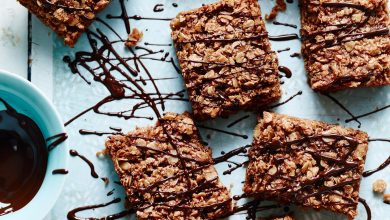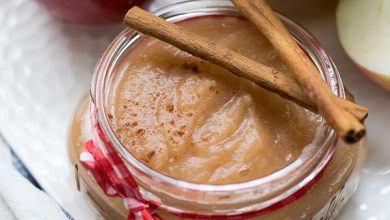Amazing Superb Delicious Asian Egg Rolls
🥟🌟 Asian Egg Rolls: A Flavorful Delight! 🥢🍤
Asian Egg Rolls, also known as Spring Rolls, are a delectable and iconic dish in Asian cuisine. These crispy delights are enjoyed worldwide and have a rich history. Let’s dive into the details:
📜 History:
Asian Egg Rolls have a long and diverse history, with variations found across several Asian countries. They are believed to have originated in China over 1,000 years ago during the Tang Dynasty. Initially, they were made with ingredients like minced meat and vegetables, wrapped in thin wheat-based wrappers. Over time, they spread to other Asian countries such as Vietnam, Thailand, and Indonesia, each region adding its own unique flavors and ingredients.
🍱 Components:
The ingredients for Asian Egg Rolls can vary depending on the region and personal preferences, but here are the typical components:
-
Wrapper: Thin rice paper or wheat-based wrappers are used to encase the filling.
-
Filling: This is where the magic happens! Common fillings include shrimp, pork, chicken, tofu, or a combination of these, along with vegetables like cabbage, carrots, bean sprouts, mushrooms, and sometimes glass noodles.
-
Seasoning: Ingredients like garlic, ginger, soy sauce, and various spices are used to season the filling for a burst of flavor.
-
Dipping Sauce: Often served with a dipping sauce, which can be a simple mixture of soy sauce and vinegar or a more complex sweet and sour or peanut sauce.
👩🍳 Preparation:
Here are the basic steps to prepare Asian Egg Rolls:
-
Prepare the Filling: Start by chopping or shredding the vegetables and protein of your choice. Sauté them in a pan with some oil, adding garlic, ginger, and soy sauce for seasoning. Cook until everything is tender and flavorful.
-
Wrapping: Soak the rice paper or spring roll wrappers briefly in warm water until they become pliable. Lay a wrapper flat, add a spoonful of the prepared filling, and fold in the sides before rolling it up tightly, similar to a burrito.
-
Frying: Heat oil in a deep frying pan or use an air fryer for a healthier option. Carefully place the egg rolls in the hot oil and fry until they are golden brown and crispy. Drain on paper towels to remove excess oil.
-
Serve: Asian Egg Rolls are best served hot with a dipping sauce of your choice. Garnish with fresh herbs like cilantro, mint, or Thai basil for an extra burst of flavor.
⏰ Time Needed:
The time required to prepare Asian Egg Rolls depends on your cooking skills and the number you’re making. Generally, it takes about 45 minutes to 1 hour to prepare and cook a batch of egg rolls. This includes prep time for chopping, filling, wrapping, and frying.
So there you have it, a delightful journey through the world of Asian Egg Rolls, from their fascinating history to their mouthwatering components, preparation steps, and approximate time needed. Enjoy making and savoring these crispy treats! 🥢🤤🌯
Certainly, here are some nutrition facts and health information for Asian Egg Rolls:
🥟 Nutrition Facts (Per Serving, approximately 1 egg roll):
- Calories: 120-150 calories
- Protein: 5-8 grams
- Carbohydrates: 10-15 grams
- Dietary Fiber: 1-2 grams
- Sugars: 1-2 grams
- Total Fat: 6-9 grams
- Saturated Fat: 1-2 grams
- Cholesterol: 10-20 milligrams
- Sodium: 200-350 milligrams
- Vitamin A: 10-15% of daily recommended intake
- Vitamin C: 6-10% of daily recommended intake
- Calcium: 2-4% of daily recommended intake
- Iron: 4-6% of daily recommended intake
🌱 Health Information:
-
Protein: Asian Egg Rolls can be a good source of protein, especially if they contain shrimp, chicken, or tofu. Protein is essential for muscle growth and repair.
-
Carbohydrates: While they do contain some carbs, Asian Egg Rolls are generally not very high in carbohydrates. This can be a healthier option for those watching their carb intake.
-
Fiber: The presence of vegetables in the filling adds a small amount of dietary fiber. Fiber is beneficial for digestion and can help keep you feeling full.
-
Fats: The fat content can vary depending on the cooking method and ingredients used. Baking or air frying can reduce the fat content compared to deep-frying.
-
Sodium: Be cautious about the sodium content, especially if you use a lot of soy sauce in the filling or a salty dipping sauce. High sodium intake can contribute to hypertension.
-
Vitamins and Minerals: Asian Egg Rolls contain various vitamins and minerals, including vitamin A, vitamin C, calcium, and iron. These nutrients are important for overall health and immunity.
-
Portion Control: Be mindful of portion sizes, as it’s easy to consume several egg rolls in one sitting. Moderation is key to maintaining a balanced diet.
-
Dipping Sauce: The type of dipping sauce you choose can significantly impact the overall nutritional profile. Opt for sauces with lower sugar and sodium content if you’re concerned about health.
While Asian Egg Rolls can be a delicious and relatively healthy option, it’s essential to pay attention to the ingredients and cooking methods to make them as nutritious as possible. Homemade versions often allow for better control over what goes into the filling and how they are cooked.









